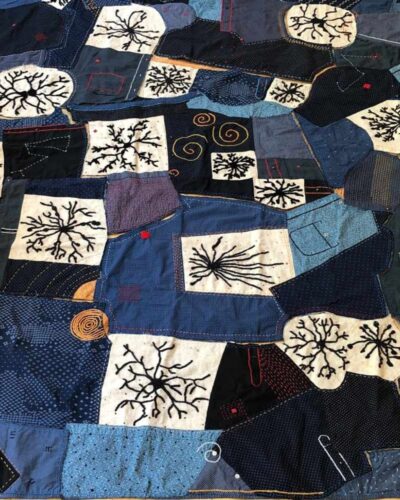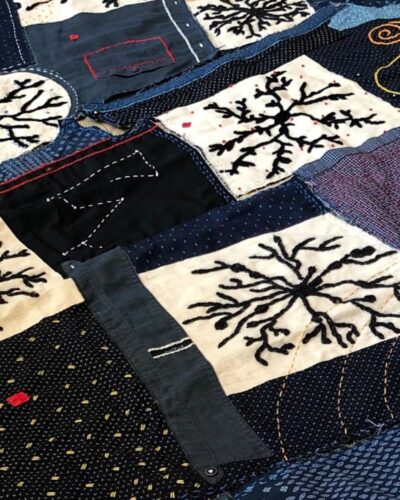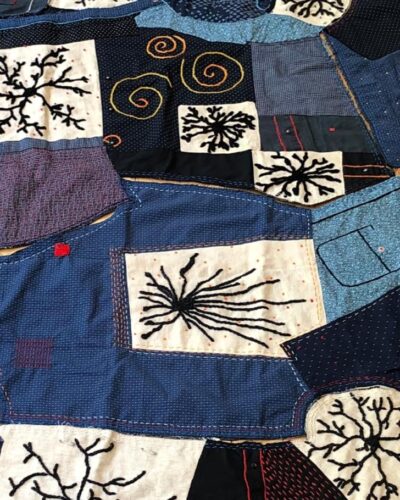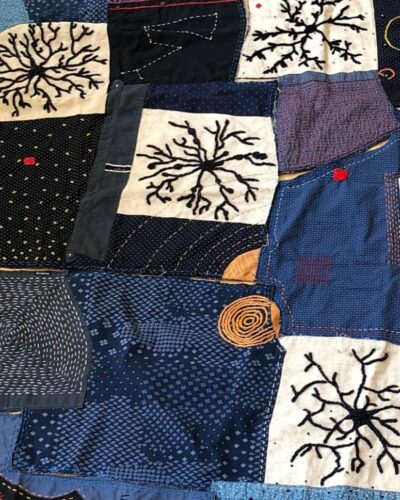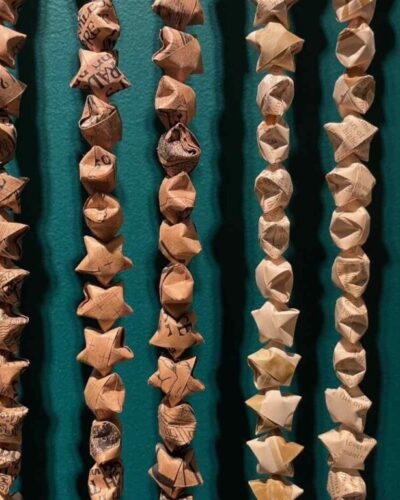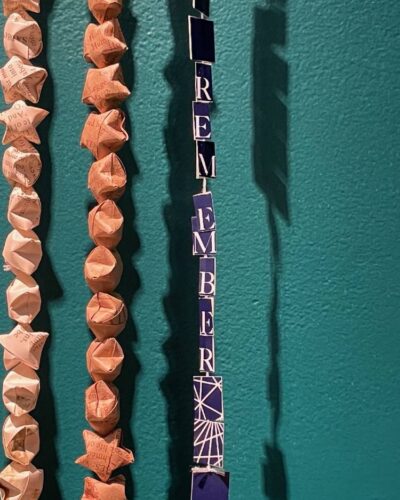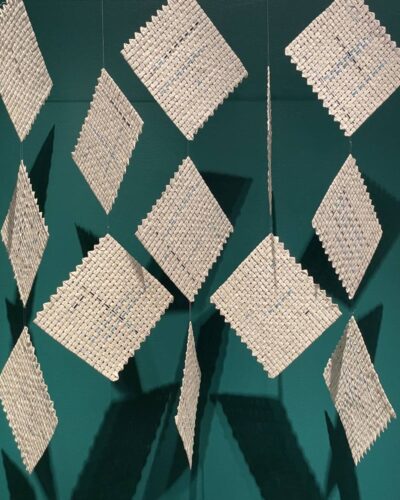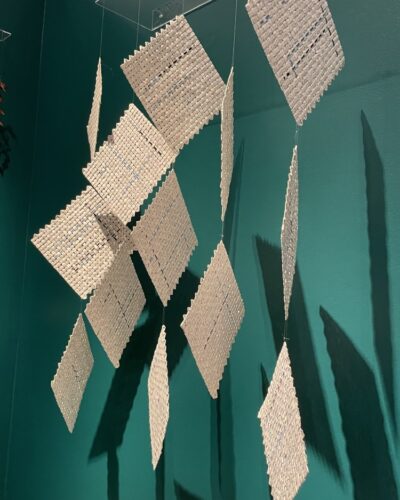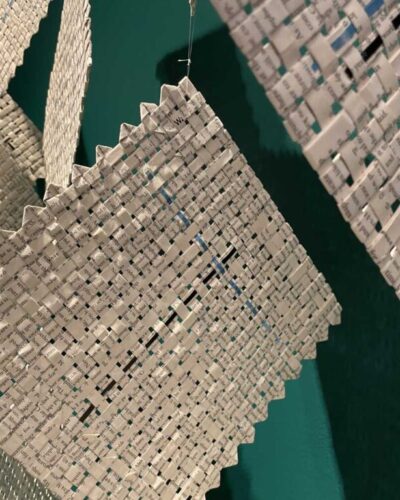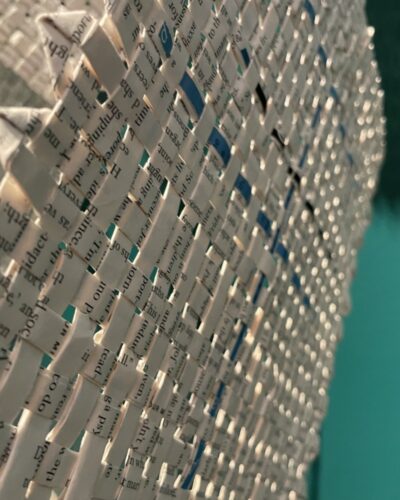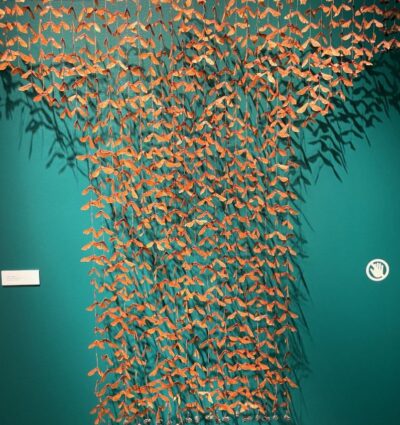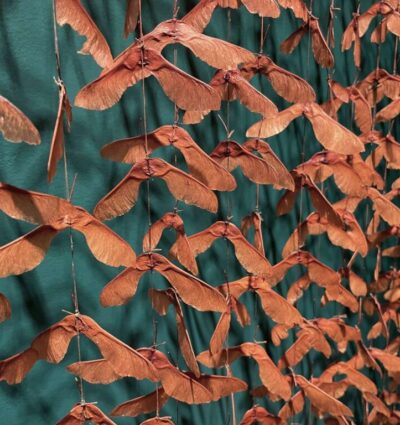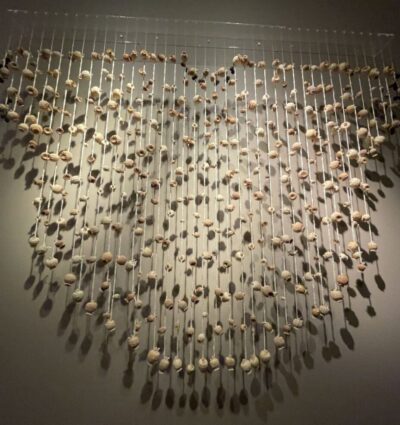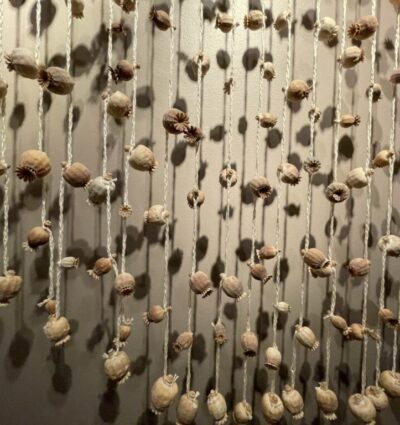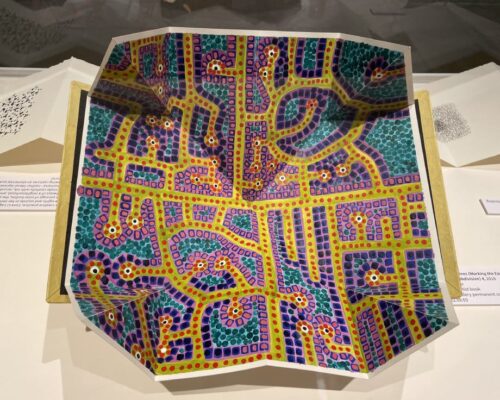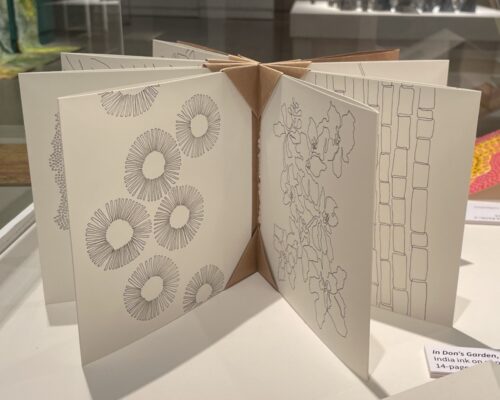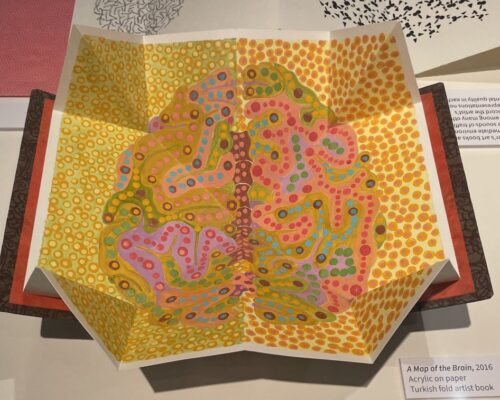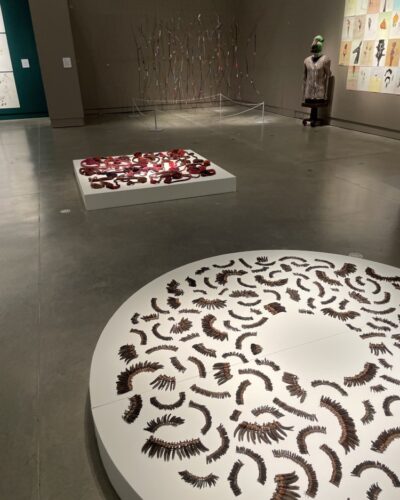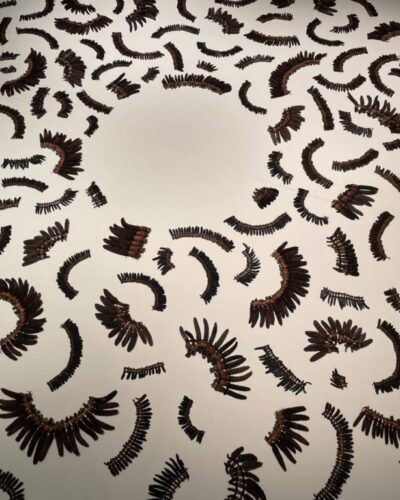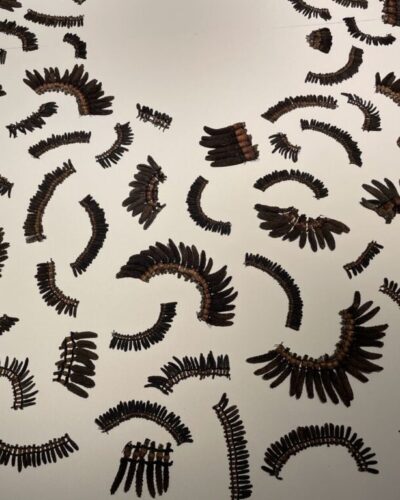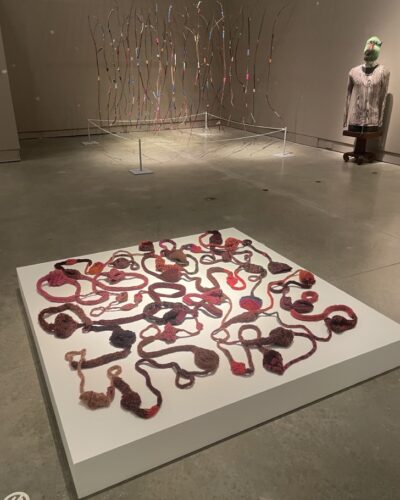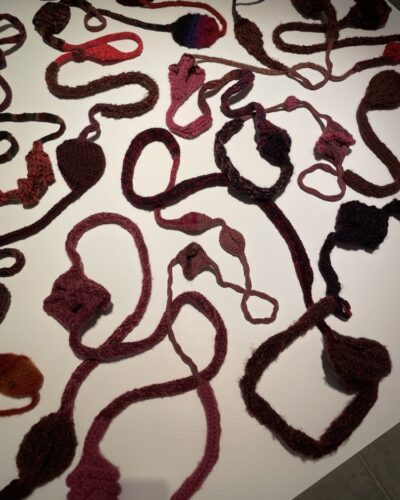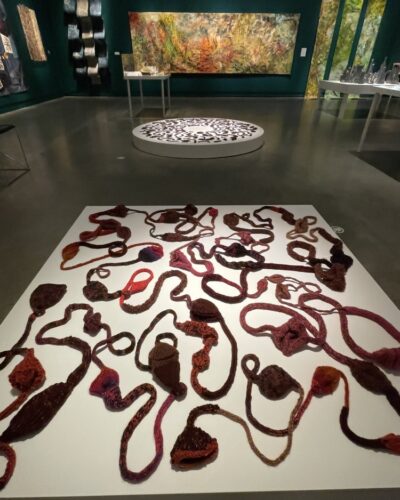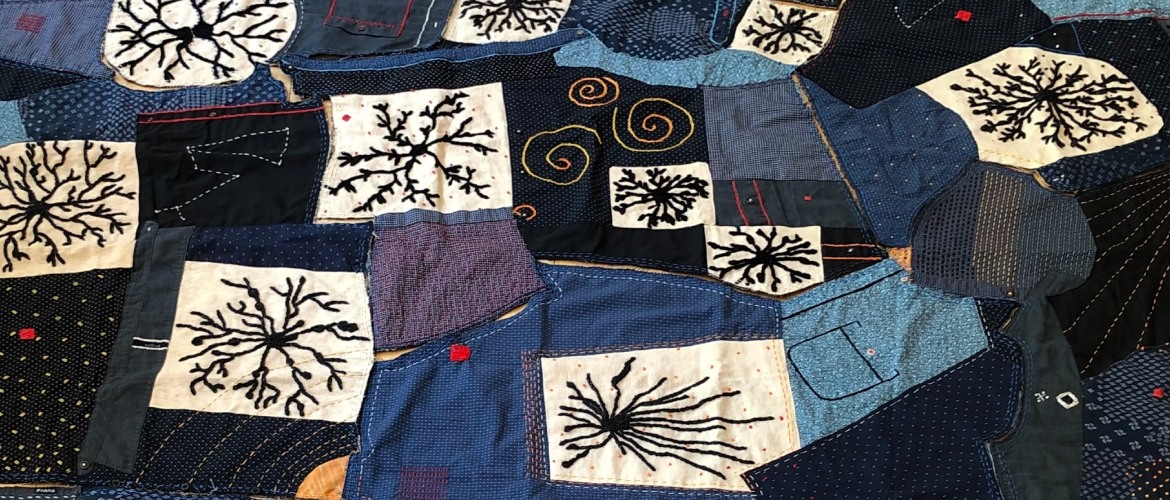
my starry night
A Tangled Thicket – Cora Li-Leger
Artist Statement
As a former art therapist, I witnessed art-making through the lens of my clients. Rather than the ‘elite domain’ of the art world, I profoundly experienced art as a fundamental need to ‘make marks and tell stories’. Having retired from that profession, I returned to my own practice with a renewed perspective.
I delight in very simple marks, with an aim to distill observations to the elemental. From my psychology background, I am fascinated by the emergent behaviours of multitudes — actions of mobs, swarms of insects, flights of birds — where the aggregate of individuals self-organizes to comprise the whole being — producing such wide-ranging results like morality, the economy, the internet, the workings of neurons in the brain. Memory and meditation are important themes as well. Several of the exhibited works specifically pay tribute to my late husband Don. I also commemorate the fine stitching of my mother, who spent hours crocheting, knitting, and embroidering elaborate items with threads — ‘women’s work’ that became a rhythm and fabric of my childhood.
Iterative gestures (marks, knots, stitches, and folds) reflect these interests. My deliberate ways of hand-making seem to open a wide expanse for the mind as I work. Material process rather than product thus becomes my primary focus.
Through Z·inc, I find friendship, artistic support, challenges to expand my practice, explorations of new themes and contexts. As well, I am moved to consider my production of art with the intent of treading more lightly upon the earth.
Cora’s bookworks and textiles are paeans to embodied memory, the vastness of consciousness, and a liveliness of material form. Several works in this space honour the memory of Don Li-Leger, a long-standing member of the Surrey art community, and Cora‘s husband. The quilt work, my starry night, transposes images of neurons (brain cells) onto fragments of some of Don’s shirts.
– Rhys Edwards, curator
my starry night
“My connection to the theme of neurology came about quite personally, as my late husband, who was one of the founding members of Z·inc, died of a brain tumour six years ago. As he was dying, he wanted to make sure that I kept working on my art. And I said to him that I was wanting to make a project about his brain tumour, and he got really excited.”
The result was Li-Leger’s my starry night, a quilt stitched from fragments of her late husband’s shirts and embroidered with depictions of astrocytes, star-shaped cells found in the brain and spinal cord.
– excerpt from an interview with Emma Jeffrey in STIR
(for Don) Be Here Now
Be Here Now and How To Change Your Mind feature deconstructed copies of books of the same titles by the authors Ram Dass and Michael Pollan, respectively. These works, which initially began as acts of mourning, celebrate a profound, lifelong partnership of love, art, and mutual understanding.
(for Don) How To Change Your Mind
Seed Coat: acer
maple keys/mystery cones/thread
As I am fascinated by multitudes, swarms and aggregates, I have an impulse to collect interesting things that I find in great numbers. Often, as was the case in these two projects, I have no idea what I will do with the found materials, but enjoy the process of gathering and amassing.
In both cases, I collected huge amounts of maple seeds/keys from a friend’s property, and a considerable number of poppy seed pods from my own garden. They sat in open boxes in my studio for several years, as I needed to live with the raw materials, allowing them to ‘reveal what they wanted to become’. On a trip to Minneapolis, I had the good fortune of attending an outstanding exhibition of Japanese textiles and antique kimonos. The bold elegant forms inspired me, and I then knew what I wanted to make with my maple and poppy treasures.
The next part of my process is then figuring out a good method of connecting (and in these cases suspending) the constituent individual elements. Though inspired by needlework practices which usually follow long-established patterns, my own process involves trial and error of somewhat invented techniques to discover what works, and again to ‘learn what the materials want to be’.
Many knots and braids later, these two resultant ‘seed coats’ appeared – an intuitive process of ‘deep watching and listening’.
Seed Coat: papaver somniferum
poppy seed pods/mystery cones/braided crochet thread
Artist Books
Suburban Songlines 1, 2 & 4
A critical component of her creative practice, Cora Li-Leger’s art books are meditative responses to the sights and sounds in her immediate environment: the movements of birds, the passage of solar bodies, the sounds of traffic, the flow of water, or the pathways of a neighbourhood, among many others. The markings on each page, made carefully with ink, record the artist’s own perception of these phenomena—neither literal representations nor completely abstract, each drawing captures an elemental quality in each of Li-Leger’s encounters with the world.
– Rhys Edwards, curator
- Suburban Songlines 4
- In Don’s Garden, vol. 1
- A Map of the Brain
Respect for the Elders
Magnolia carpels and crochet thread
Cora Li-Leger’s experience as an expressive art therapist informs her own practice. With her deliberate, meditative approach to artmaking, Li-Leger often combines found organic materials with delicate needlework. Her approach speaks to the kinds of creative labour typically associated with “women’s work,” and reflects her own interests in the deep ties that bind us both to our ancestors and to other species. Many of her works, such as the nearby floor-based artworks Lineage and Respect for the Elders, as well as her Seed Coat series, are expressions of these themes. Through the careful arrangement of materials, Li-Leger cultivates a harmony between form and material.
– Rhys Edwards, curator
Lineage
“Time started to bend. I was carrying the future inside me. I would learn that I was also carrying the eggs, already within my baby’s womb, that could go on to partly form my potential grandchildren. My future grandchildren were in some way inside me, just as part of me spent time in the womb of my grandmother. I was carrying inside me a pool of amniotic fluid, which was once rivers, lakes and rain. I was carrying a third more blood, which was once soil and stars and lichen. The baby was formed of the atoms of the earth, of the past and the future. Every atom in her body existed when the earth formed 4.5 billion years ago. She will live for many years, I hope, when I have returned to the ground. She will live on the earth when I am gone. Time bends.” — Lucy Jones, from Matrescence: On Pregnancy, Childbirth, and Motherhood.
Where do we come from? Imagining our lineage from life to life………
Lineage, a long umbilical cord, pays respect to all those who have come before each of us and those who have and may come after – the mysterious hereditary line that reaches infinitely back and continues toward the future.

